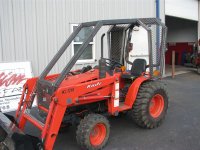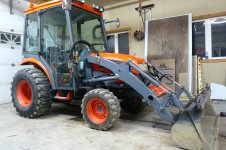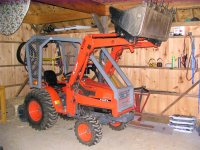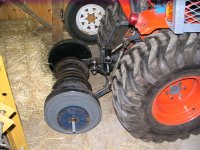gladehound
Veteran Member
I have an LB-1914. For those who are not familiar, this is a 20hp, 2300 pound 4x4 mechanical gear tractor. After loader w tooth bar (800 lbs), rear weight (700 lbs), FOPS (300 lbs), filled rear tires (400 lbs) and me (230 lbs), the little tractor is approaching a 5,000 pound operating weight.
With 8 psi in the rears and 18 psi in the fronts (industrials) it sure does push, and it sure does pull!
But is there a limit to how far I can take this ballast thing? I am concerned about axle ratings because I don't now what they are and I'd like to put bigger curl cylinders on the loader.:thumbsup:
With 8 psi in the rears and 18 psi in the fronts (industrials) it sure does push, and it sure does pull!
But is there a limit to how far I can take this ballast thing? I am concerned about axle ratings because I don't now what they are and I'd like to put bigger curl cylinders on the loader.:thumbsup:



